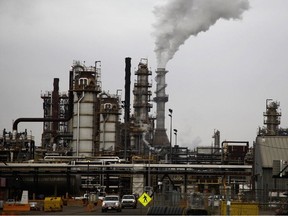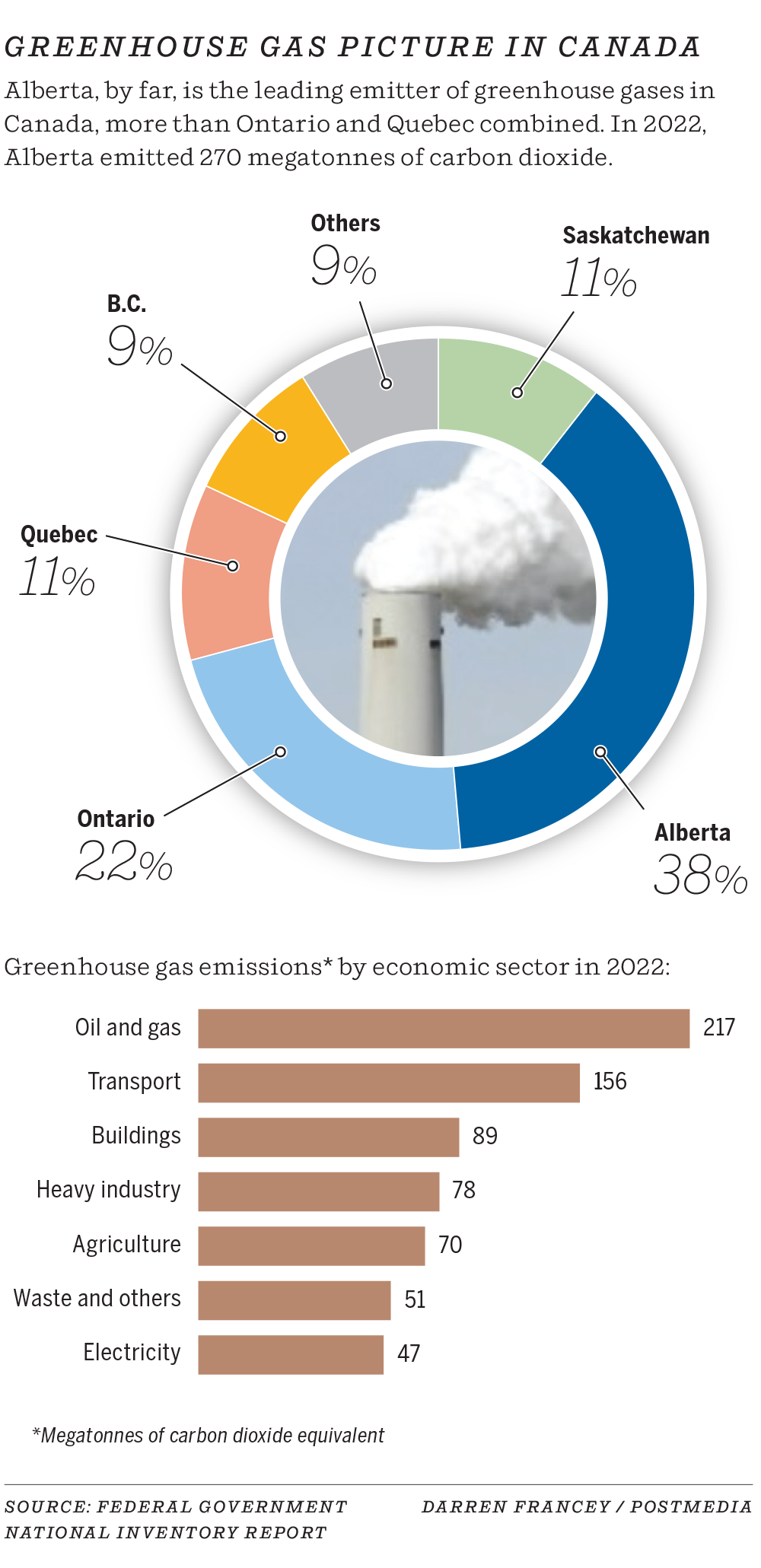Federal energy minister Jonathan Wilkinson said the oil and gas sector’s overall emissions ‘must go down’

Article content
Alberta remains Canada’s runaway leader for overall emissions, though the province has managed reductions over the past nine years despite growing contributions from the oil and gas sector.
Released Thursday, Canada’s National Inventory Report provided a detailed update on countrywide emissions.
Article content
Alberta’s 270 megatonnes of carbon dioxide (CO2) recorded in 2022 means it has reduced emissions by 21 megatonnes since 2015. That’s still up from 2005 — the frequently-used baseline when tracking emissions reductions — when Alberta emitted 251 megatonnes into the atmosphere.
Advertisement 2
Article content
Lowered emissions in electricity, largely due to Alberta’s rapid shift off coal power, have contributed to its most substantial reductions since 2005. That progress has been offset by the oil and gas sector’s expansion, the report said.
Overall, Canada’s emissions have increased by about one per cent from 2021 to 2022, but have decreased seven per cent from 2005 levels.
“Alberta is on this opposite trajectory to the rest of the country,” said Janetta McKenzie, senior oil and gas expert at the Pembina Institute, a clean-energy think-tank. “There were obviously some improvements in Alberta . . . but (oil and gas’) slice of the pie is growing.”
Between 2021 and 2022, oil and gas sector emissions in Alberta decreased half a megatonne.
Cancelled carbon capture project not a bad omen for oil and gas projects: expert
The report comes days after Edmonton-based Capital Power cancelled a planned $2.4-billion carbon capture project at its Genesee natural gas-fired plant, saying the project is not economically feasible due to high capital costs.
In a Wednesday conference call with analysts, Capital Power CEO Avik Dey said among the several factors that led to the decision was uncertainty over how much the company could earn from the carbon credits the project would generate.
Article content
Advertisement 3
Article content
In a statement addressing the inventory report, Alberta Environment Minister Rebecca Schulz blamed Ottawa for Capital Power’s decision to abandon the project.
But Capital Power’s natural gas project would require significantly higher costs than the ones being proposed by the oil and gas sector, said David Sawyer, environmental economist at the Canadian Climate Institute, a federally funded but independent think-tank.
“I don’t get too worried when Capital Power says, ‘Hey, we’re not going to do this,’ because we’ve always known it’s really, really expensive for those folks,” he said.
‘It needs to go way down’: Federal energy minister
As oil and gas production continues to ride high, Alberta’s per-barrel emissions are declining, Schulz said in her statement in response to the inventory report.
Schulz said the province could be doing more “if the federal government came to the table.”
Her office did not respond to a question about whether the province is setting specific short-term emissions-reduction targets. The Alberta government has set a target of reaching carbon neutrality by 2050 but has not publicly announced interim targets it’s aiming to reach in the intervening 26 years.
Advertisement 4
Article content
In an interview with Postmedia, federal Energy Minister Jonathan Wilkinson said while the oil and gas sector’s emissions intensity has decreased, he’s concerned total emissions are still rising.
“The absolute emissions can’t continue to go up, they must go down,” Wilkinson said.
Referencing Schulz’s statement, Wilkinson said the discussion needs to shift away from emissions intensity.
“Absolute emissions in Alberta went down by one megatonne last year. Now, that’s better than up by one megatonne, but it needs to go down in a more significant way in the coming year.”
Recommended from Editorial
Emissions cap targets will be adjusted due improved methane emission recording
The update also comes amid conflict between Ottawa and Alberta over the federal government’s cap on oil and gas emissions. Premier Danielle Smith and Schulz, alongside several industry players, have objected to the proposed regulations since they were announced in early December 2023.
Advertisement 5
Article content
New aerial technology being used to survey methane emissions with greater accuracy means the federal government’s measurements for oil-and-gas emissions are larger than previous reports.
For example, last year’s report estimated 2019 emissions from the sector at 201 megatonnes. That number has been revised to 226 megatonnes.
Sawyer said the oil and gas emissions cap regulations will be adjusted accordingly based on the new figures. The original cap expected industry emissions to be reduced by a range of 106 to 112 megatonnes by 2030, with flexibilities allowing between 131 and 137 megatonnes.
Sawyer estimated the new cap will increase by about 20 to 25 megatonnes.
— With files from Chris Varcoe
Article content






